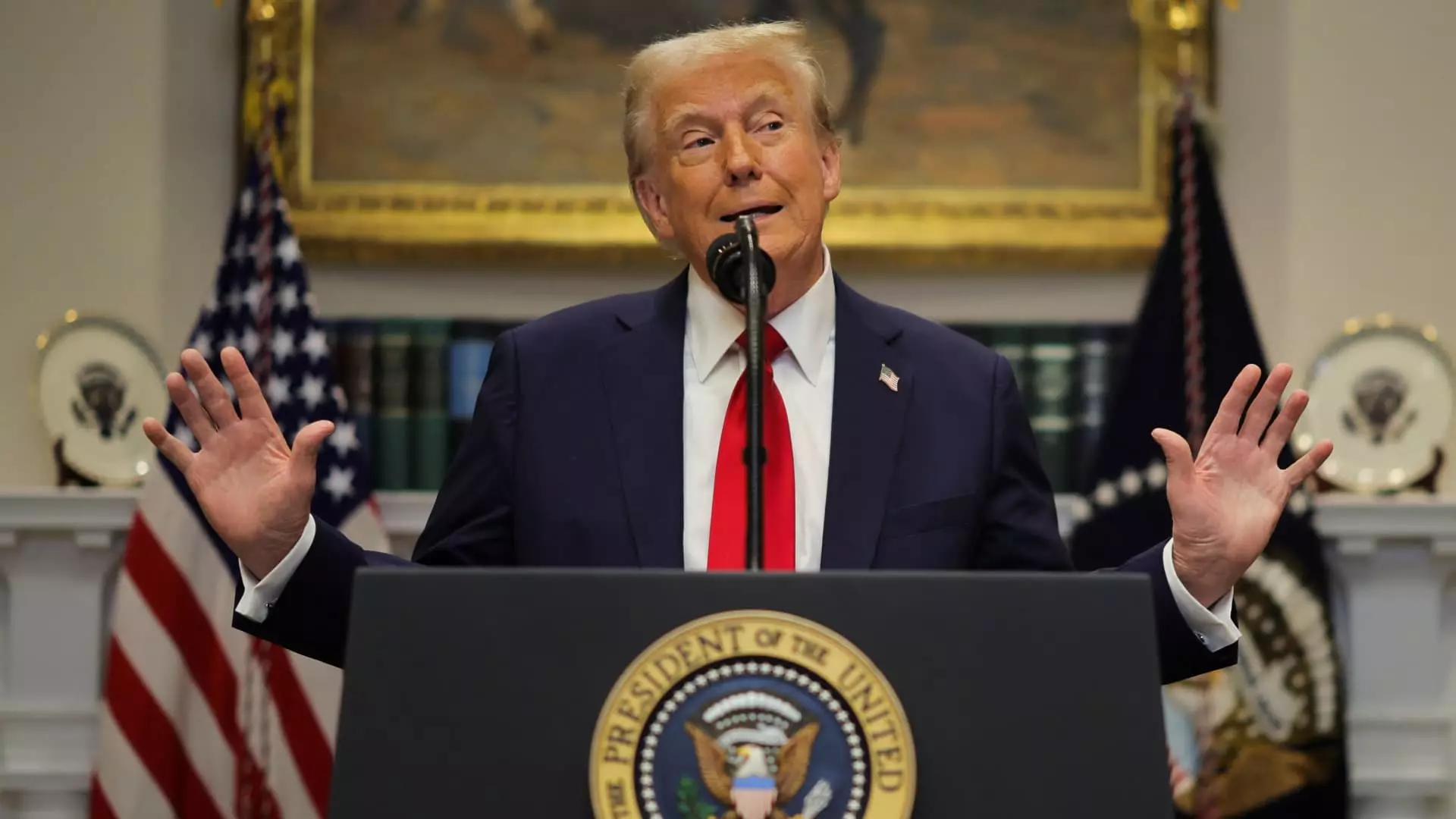Since taking office, President Donald Trump has made headlines with his bold economic decisions, particularly regarding tariffs on foreign nations. Recently, he has reignited discussions about imposing a 10% tariff on imports from China, a move ostensibly aimed at mitigating the flow of fentanyl—a potent synthetic opioid frequently linked to the nation’s ongoing opioid crisis. His announcement has left many questioning the repercussions for trade relationships, domestic economic stability, and international diplomacy.
During a briefing at the White House, Trump elaborated that the proposed tariff could be implemented as early as February 1. The reasoning provided for this measure centers on the assertion that China is a major source of the precursors for fentanyl, which ultimately makes its way to the United States through Mexico and Canada. It’s important to consider the multifaceted implications of using tariffs as a punitive measure against a country accused of contributing to the drug crisis in the U.S. While the intention to curb illegal drug imports may resonate with many citizens, the effectiveness of tariffs in actually addressing the supply of fentanyl is highly questionable. Tariffs typically impact goods and trade balances rather than resolve the deeper social problems associated with addiction and drug trafficking.
In discussions surrounding trade, it’s crucial to acknowledge that tariffs tend to have cascading effects. For instance, while they may be designed to protect domestic industries or serve geopolitical purposes, they often end up straining relationships with trading partners and raising prices for consumers. The dichotomy between addressing drug trafficking and fostering economic cooperation could undermine both objectives.
Following Trump’s discussions with Chinese President Xi Jinping regarding trade and fentanyl, the complexities of U.S.-China relations become evident. While the two countries have agreed to cooperate on addressing the fentanyl crisis, the simultaneous threat of tariffs suggests a broader trade war that disrupts mutual economic interests. Both countries are interdependent, with the U.S. being China’s largest trading partner, which complicates the notion of “winners” in a trade conflict, as highlighted by China’s Vice Premier at the World Economic Forum.
Economic data reveals a nuanced reality: while U.S. exports to China may see growth, there remains a trade surplus favoring China. The data’s implications are clear: imposing additional tariffs will likely exacerbate economic friction. Predictions from institutions like the Peterson Institute for International Economics forecast that further tariffs could have dire effects on GDP for both nations over the next four years—delivering a $55 billion blow to the U.S. economy and a staggering $128 billion drop for China.
Not content with a singular focus on China, Trump’s administration is also contemplating a 25% tariff on goods imported from Mexico and Canada. The motivation, once again, hinges on border issues and immigration, suggesting that economic policy is being wielded as a tool for broader political maneuvers. The rhetoric implying that tariffs could curb the number of individuals crossing borders raises severe questions about the conflation of economic trade barriers with immigration policy.
This approach towards trading partners exhibits a fundamental misunderstanding of the complexities surrounding international relations. Economic sanctions and tariffs may not only impact trade but also alienate allies and destabilize regions. Trump’s administration has shown a pattern where economic policy often veers into unilateral territory, compelling nations to respond reciprocally, thereby spiraling toward a trade war.
In light of these developments, the landscape of international trade is marked by uncertainty. The potential tariffs on China, Mexico, and Canada symbolize a fraught approach to global economics, clouded by political motivations and a lack of nuanced understanding. While addressing concerns about fentanyl and immigration is essential, utilizing tariffs as a solution could destabilize long-standing trade relationships and lead to unforeseen negative consequences for American consumers and industries.
As global economies become increasingly interconnected, there is a pressing need for cooperative frameworks that address crises without resorting to punitive measures. A more holistic strategy prioritizing diplomatic engagement may yield better results in confronting issues that affect health and safety on a national level while preserving economic stability.
The viability of Trump’s proposed tariffs offers a critical lens into the future of economic policy—one that demands careful consideration and a reevaluation of priorities in our complex global context.

